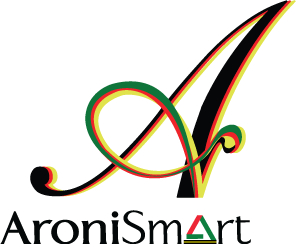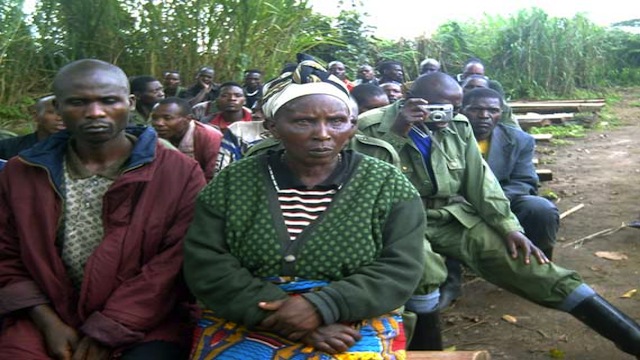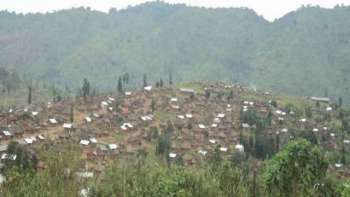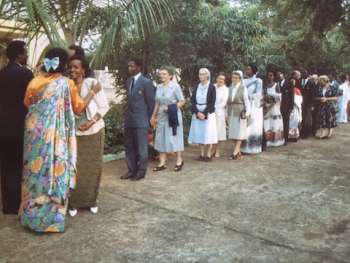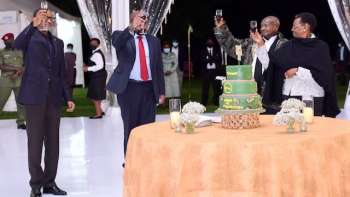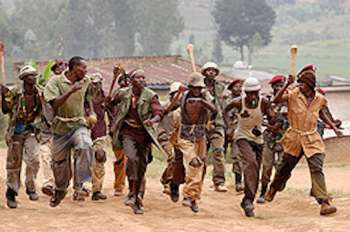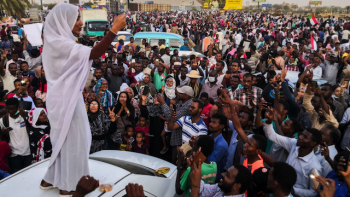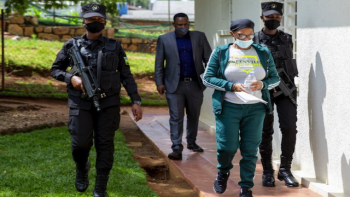Rwandan Patriotic Army (RPA) vs. Democratic Liberation Forces of Rwanda (FDLR): The Untold Story of the Congolese Tragedy - Beyond the Myth Ex-FAR/Interahamwe and the Congolese Tragedy.
by Felicien Kanyamibwa, PhD., MqBA.
New Jersey, USA, January 15, 2009.
INTRODUCTION
On December 5, 2008, the Rwandan and the DRC Governments signed in Kigali yet another agreement for the military disarmament of the armed groups roaming the Great Lakes Region of AFrica, including ex-FAR/Interahamwe and the National Congress for the Defense of the People (CNDP) of the renegade General Laurent NKunda. The act followed, rather claimed to be a continuation of, a similar agreement signed in Nairobi, Kenya, on November 9, 2007, for the disarmament of the so-called negative forces.
The DRC government committed itself to repatriating the ex-FAR/Interahamwe, by force if necessary, and to reintegrating the CNDP forces. Ironically, the DRC government signed the new agreement after its beleaguered Congolese army, FARDC, suffered humiliating defeats by well armed, better military trained, and strenuously determined CNDP forces. According to the UN Expert Report S/2008/773 of December 12, 2008 (Final report of the Group of Experts on the DRC submitted in accordance with paragraph 18(d) of Security Council resolution 1807 (2008)), CNDP was created and is sponsored, armed, funded, and reinforced by the Rwandan army, Rwandan Defense Forces (RDF), formerly known as the Rwandan Patriotic Army (RPA). The disarming forces were disarmed, hence the sprinkler was sprinkled by the overwhelming power of the Rwandan canons and gunfire.
RWANDA GAINED EVERYTHING
- Ex-FAR/Interahamwe-FDLR, with names such as Ignace Murwanashyaka, Mr. Musoni, Callixte Mbarushimana etc. All those are FDLR members, but to qualify them ex-FAR or Interahamwe was a stretch.
- Ex-FAR/Interahamwe-RUD/RPR, with names such as Jean Marie Vianney Higiro, Felicien Kanyamibwa, Gerard Ntashamaje, Rukeba, etc. Again, these are names of people hardly associated with ex-FAR or Interahamwe. Some such as Major Gerard Ntashamaje and Rukeba are Tutsis themselves and former members of the Rwandan Patriotic Front (RPF).
Brief, Kigali has won the battle, and wants all: the hands, the arms and perhaps the entire body. The Tutsi clique in power in Rwanda has even claimed the exclusive right to decide on who, among the Hutus, can be repatriated to Rwanda and those who cannot.
ALL ABOUT BERLIN II AND NATURAL RESOURCES
Advertisement
Get the following books on Amazon:

Legs of Tornado: The Human Who Outran the Wind, an African tale about a human from a humble upbringing who outran the wind, defeated evil spirits, overcame his fate, became a respected clan chief, and triumphed ever after
Click Here to Get the books: Even Roosters Dream to Fly and Legs of Tornado
Even Roosters Dream to Fly along with Legs of Tornado are also available on Amazon worldwide and soon to several other platforms:
For more on the book, the author, the inspiration of the stories, Visit the author website here
WHAT DOESN'T THE DRC GOVERNMENT WANT CONGOLESE TO KNOW?
- Gbadolite-Kotakoli-Kakuma ( Province of Equator- North);
- Gbadolite-Businga- Karawa-Gemena (Province of Equator-North);
- Mbandaka- Bokungu-Boende-Ikela (Province of Equator- South );
- Mbandaka-Basankusu and Basankusu-Befale (Province of Equator- North);
- Mbujimayi-Kabinda (Province of Oriental Kassai);
- Manono-Kiambi (Province of Katanga);
- Kamina-Kabalo-Nyunzu (Province of Katanga);
- Poweto, Cantonnier-Pepa-Kapona (Province of Katanga).
WHAT THE FDLR MEMBERS MAY WANT TO KNOW
WHAT DO THE DRC GOVERNMENT AND THE CONGOLESE PEOPLE GAIN WITH THE AGREEMENTS?
WHAT DOES THE INTERNATIONAL COMMUNITY GAIN?
What is more troubling is that events that preceded the December 5, 2008 agreement shed light on several points that undermine the legitimacy of the agreement itself :
As an example, the United Nations Mission, through MONUC leaders, has been interacting with the National Democratic Congress (NDC), a coalition of the Rally for Unity and Democracy (RUD-Urunana) and the Rally for the Rwandan People (RPR) and other Rwandan politico-military groups involved in the peace process in the Great Lakes Region. The United Nations Mission along with representatives of the International Community, including Ambassadors of some of the Security Council members, and the media who visited the Rwandan rebels troops and dependents in January 2008, May 2008, and July-August 2008 in Mbwavinywa and Kasiki inNorth Kivu are aware of the fact.
- Establishment of a list of 6,997 undesirables, including children born in the congolese jungles, accusing them of genocide, followed by international arrests warrants against people involved in the Kisangani peace process;
- Forced return to DRC of combatants who were voluntarily repatriated to Rwanda by the MONUC, with the specific mission to massacre Congolese civilians and put the blame on Rwandan politico-military groups;
- Mental and physical torture and persecution of repatriated combatants;
- Attempts to attack the Kasiki regroupment site. The attacks were stopped by the MONUC at 30 km of Kasiki in August 2008 and again in November 2008;
- Forcing Rwandans to emigrate to the DRC and occupy land and businesses of the Congolese natives;
- Creating parallel administrations aimed at uprooting Congolese communities.
CONCLUSION
----
Note: Felicien Kanyamibwa, PhD., MqBA, is a Co-Founder of Organization for Peace, Justice and Development in Rwanda (OPJDR), a US-based non-profit organization.
©Copyright 2009, Felicien Kanyamibwa.


